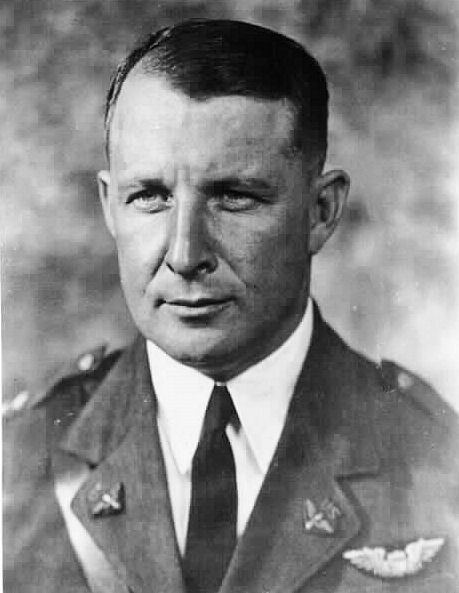Allegiance United States Name Frederick Eglin | Years of service 1916-1937 | |
 | ||
Born February 23, 1891New York, New York ( 1891-02-23 ) Service/branch | ||
Frederick Irving Eglin (February 23, 1891 – January 1, 1937) was a career officer in the United States Army Air Service and United States Army Air Corps. He was killed in an air crash on January 1, 1937, and Eglin Field (later Eglin Air Force Base), Florida, was named in his honor on August 4, 1937.
Eglin joined the Indiana National Guard in 1911 while a student at Wabash College, and first began federal service in June 1916, serving on the U.S. border with Mexico. In 1917 he was commissioned in the Indiana Guard after the United States entered World War I and was assigned to pilot training. After earning his rating as a pilot and a commission in the Aviation Section, U.S. Signal Corps, Eglin remained at the school as a flying instructor. Eglin received a regular commission in the Air Service on July 1, 1920 and commanded several squadrons in the United States and the Philippines.
He served three years as a senior instructor and commander at the Advanced Flying School at Kelly Field, Texas, after which he studied at both the Air Corps Tactical School (ACTS) and the Command and General Staff College. After a four-year tour at the ACTS as an instructor and department director, Eglin was promoted to lieutenant colonel and assigned to the headquarters of the GHQ Air Force, where he was serving as a staff officer at the time of his death.
Early years
Eglin, born in New York City on February 23, 1891, was orphaned at a young age. He was educated through high school in New York, but was admitted to Wabash College in Crawfordsville, Indiana, through the intercession of a Wabash alumnus. He was a multi-sport college athlete, playing halfback in football, forward in basketball, and the middle infield in baseball. Among his friends were classmate Kent Lambert, a Crawfordsville native who became a career Army officer, and his brother Ward Lambert, who became head basketball coach at Purdue University. Eglin graduated from Wabash with the class of 1914, took up residence in Crawfordsville, and became an athletics coach.
During his freshman year at Wabash, Eglin enlisted in the Indiana National Guard, advancing while a student from private to sergeant in Company B, 2nd Indiana Infantry, a unit that traced its history to the Battle of Tippecanoe. In 1914, shortly before graduation, he was appointed Regimental Sergeant Major on March 4, 1914, serving in that capacity until his commissioning in 1917.
He also met and married Mary Lucille Oda, also of Crawfordsville. They had two children, Frederick Junior, born November 19, 1922, and Harriet Jane, born in 1925. Frederick Eglin, Jr. graduated from West Point in 1944, became a pilot in the United States Army Air Forces, and flew Boeing B-17 Flying Fortresses with the 401st Bomb Group in England during World War II. Lucille Eglin was an artist known to many in the Air Corps as its "unofficial artist" from the portraits and landscapes she painted over the signature "MO" at their varied duty stations. Lucille Eglin was killed in a house fire in Washington D.C. two years to the day after her husband's death and was buried in his plot at Arlington National Cemetery.
